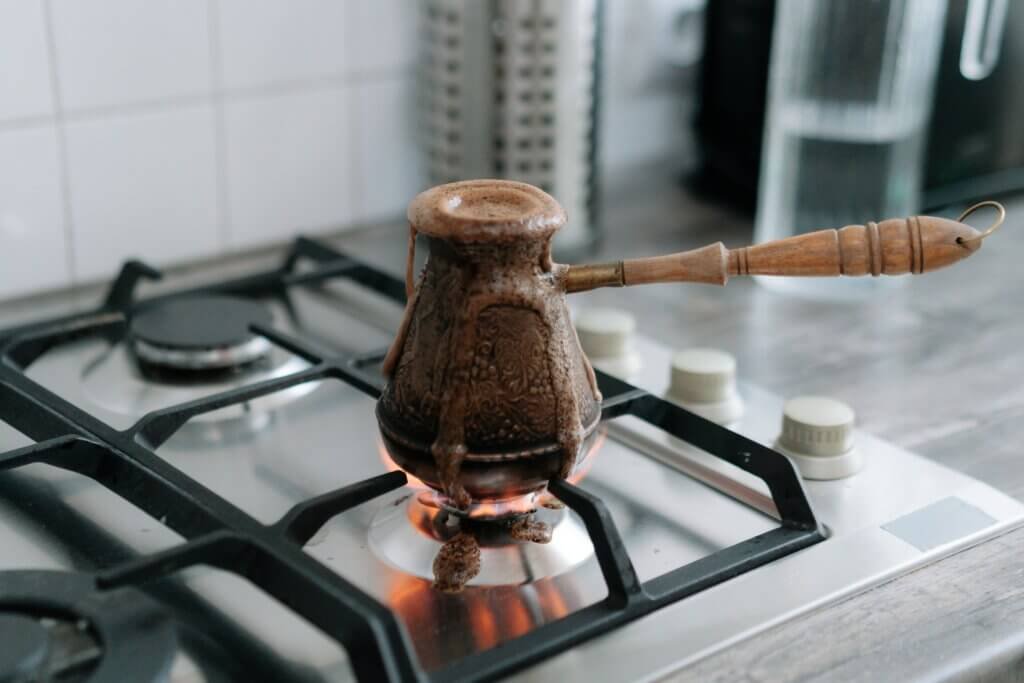You wouldn’t believe how frustrated you can get when you’re craving a jar of pickles, and no matter how hard you try, that stubborn lid just won’t budge. Don’t worry, though, because we’ve got you covered. In this article, we’ll share some of the most popular kitchen hacks for opening jars with ease. Say goodbye to sore hands and hello to pickle paradise!

Choosing the Right Jar Opener
Consider the type of jar opener
When it comes to choosing the right jar opener, the first thing you’ll want to consider is the type of jar opener that will best suit your needs. There are several options available on the market, each with its own advantages and disadvantages. Some of the most common types include handheld jar openers, electric jar openers, and jar openers that attach to the underside of a cabinet.
Look for ergonomic designs
Another important factor to consider is the design of the jar opener. Look for options that feature an ergonomic design, as this will help ensure a comfortable and secure grip. An ergonomic design will reduce strain on your hand and make the jar opener easier to use, especially if you have arthritis or other conditions that affect hand strength and mobility.
Check for adjustable options
It’s also worth considering jar openers that offer adjustable options. These allow you to customize the size of the grip to fit different jar lids, making it easier to open a wide variety of jars in your kitchen. Adjustable jar openers can be especially useful if you have jars of different sizes in your pantry or if you frequently purchase products with varying lid sizes.
Read customer reviews
Before making a final decision, be sure to read customer reviews of the jar opener you’re considering. This will give you valuable insights into the experiences of other users and help you determine if a particular jar opener is reliable and effective. Look for reviews that mention the durability, ease of use, and overall efficiency of the jar opener. Taking the time to do this research will ensure that you choose a high-quality jar opener that will make your life in the kitchen much easier.
Using Grip Enhancers
Rubber bands or elastic bands
If you find yourself struggling to get a good grip on a stubborn jar lid, a simple and cost-effective solution is to use rubber bands or elastic bands. Wrap one or two rubber bands around the lid, making sure they’re stretched tight. The rubber bands create friction and provide an extra grip, which can make it much easier to twist and open the jar.
Silicone grip pads
Silicone grip pads are another handy tool for improving your grip on jar lids. These flexible pads can be placed on top of the lid, providing a non-slip surface that makes it easier to twist and open the jar. They’re often reusable and can be cleaned easily, making them a convenient addition to your kitchen toolkit.
Rubber gloves
If you have trouble opening jars even with the help of grip enhancers, try putting on a pair of rubber gloves. The rubber material will increase your grip on the lid, giving you more leverage and making it easier to twist and open the jar. Rubber gloves are a versatile tool that can be used in various kitchen tasks, so it’s a good idea to have a pair on hand.
Hot water method
Another trick to enhance your grip and loosen stubborn jar lids is the hot water method. Fill a basin or sink with hot tap water and place the jar upside down in the water, ensuring the lid is fully submerged. The heat from the water causes the metal lid to expand slightly, which loosens the seal and makes it easier to open the jar. After a few minutes, remove the jar from the water and try opening it again. You’ll be amazed at how much easier it is!

Tapping and Impact Techniques
Utilizing the back of a spoon
If you don’t have any grip enhancers on hand, don’t worry! You can still open that stubborn jar by using the back of a spoon. Simply hold the jar with one hand and firmly tap the center of the lid with the back of the spoon. This tapping action will create small impacts that can weaken the seal and make it easier to twist and open the jar. Try tapping around the lid in a circular motion to ensure you cover the entire surface.
Using the side of a knife
Another handy tool you may already have in your kitchen is a knife. Instead of using the sharp edge, utilize the side of the knife to tap the lid. Hold the jar in one hand and place the flat side of the knife against the edge of the lid. Give the knife a few firm taps with the palm of your other hand. The pressure from the taps can help loosen the lid and make it easier to open.
Tapping the lid with a firm object
If you don’t have a spoon or knife readily available, you can improvise with other firm objects. Anything from the handle of a utensil to the bottom of a glass jar can be used to tap the lid. Hold the jar firmly in one hand and use the chosen object to tap the lid with a bit of force. The repeated tapping will help break the seal and make it easier to open the jar.
Using a rubber mallet or hammer
For particularly stubborn jar lids, you may need to bring out the heavy artillery. A rubber mallet or a hammer wrapped in a soft cloth can be used to give the lid a solid whack. Make sure to use a gentle, controlled force to avoid damaging the jar or lid. The impact from the mallet or hammer can help break the seal and loosen the lid, making it easier to twist and open.
Applying Heat to Loosen the Lid
Running warm water over the jar
One of the simplest methods for loosening a stubborn jar lid is to run warm water over it. Hold the jar under warm tap water, directing the flow directly onto the lid. The heat from the water will cause the metal lid to expand slightly, breaking the vacuum seal. This expansion makes it easier to twist and open the jar. Make sure the water is not too hot to handle, and be cautious of any glass jars that may be sensitive to temperature changes.
Wrapping the lid with a warm towel
If you don’t want to waste water or prefer a slightly different approach, try wrapping the lid of the jar with a warm towel. Dip a clean towel in warm water, wring out any excess, and wrap it tightly around the lid. Leave the towel on for a few minutes, allowing the heat to penetrate the lid and soften any sticky substances. Afterward, remove the towel and try twisting and opening the jar. The heat and moisture will have worked to loosen the lid, making it easier to open.
Using a hairdryer to heat the lid
If you’re in a hurry or don’t have access to warm water, a hairdryer can come in handy. Plug in a hairdryer and set it to the highest heat setting. Aim the hot air directly at the lid of the jar, moving the hairdryer in a circular motion. The heat will help expand the metal lid, breaking the seal and making it easier to open. Be cautious not to overheat the jar or expose it to excessive heat for an extended period.
Boiling the jar in water
For stubborn lids that just won’t budge, you can try boiling the jar in water. Fill a pot with enough water to fully submerge the jar, making sure to leave some space at the top to prevent overflowing. Heat the water to a rolling boil, then carefully place the jar in the pot, ensuring the lid is fully submerged. Allow the jar to boil for a few minutes. The heat from the boiling water will cause the metal lid to expand, loosening the seal and making it easier to open.

Freezing the Jar
Placing the jar in the freezer
If all else fails, you can try freezing the jar to loosen the lid. Remove any perishable contents from the jar and place it in the freezer. Make sure the jar is positioned upright and is not touching any other items in the freezer. Leave the jar in the freezer for several hours or overnight. The freezing temperatures will cause the metal lid to contract, while the expansion of the jar’s contents will create pressure. These combined effects can help break the seal and make the lid easier to open.
Using an ice cube on the lid
To expedite the freezing process, you can place an ice cube directly on the lid of the stubborn jar. The ice cube will help lower the temperature of the lid faster, causing it to contract more quickly. This added contraction, along with the pressure from the expanding jar contents, can help break the seal and make the lid easier to twist and open.
Creating an ice water bath for the jar
Another method for freezing the jar is to create an ice water bath. Fill a basin or sink with cold water and add ice cubes. Place the jar in the ice water bath, ensuring it is fully submerged. The combination of the freezing water and the ice will lower the temperature of the jar and its lid, causing them to contract. As with the freezer method, the contraction and pressure will work together to break the seal and make the lid easier to open.
Applying pressure while the jar freezes
While the jar is in the freezer or ice water bath, you can try applying gentle pressure to the lid by using tools like a rubber mallet, hammer, or the back of a spoon. This extra pressure can help further weaken the seal and make it easier to twist and open the jar once it has been sufficiently frozen. As always, be cautious not to apply too much force and risk damaging the jar or breaking the lid.
Expanding Options with Tools
Using a jar opener tool
If you find that manual techniques and grip enhancers aren’t providing the desired results, consider investing in a jar opener tool. These specialized tools are designed to provide maximum leverage and grip, making it much easier to open jars with minimal effort. Most jar opener tools feature adjustable grips and ergonomic handles, ensuring a comfortable and secure hold. They come in various designs, including handheld jar openers and jar openers that attach to the underside of a cabinet.
Using a rubber strap wrench
A rubber strap wrench is another tool that can greatly assist in jar opening. This versatile tool features a rubber strap that can be adjusted to fit different lid sizes. Simply position the strap around the lid, hold the wrench’s handle, and turn it counterclockwise. The rubber strap provides a strong grip on the lid, allowing you to effortlessly twist and open even the most difficult jars. Rubber strap wrenches can be found in most hardware stores and are a convenient addition to your kitchen toolkit.
Trying a butter knife technique
If you don’t have any specialized tools on hand, don’t underestimate the power of a butter knife. While not its intended purpose, a butter knife can work wonders in opening a stuck jar lid. Insert the flat edge of the knife between the lid and the jar, angling it slightly to create leverage. Apply gentle pressure and twist the lid counterclockwise to break the seal. Be cautious not to exert too much force or use excessive pressure, as this could cause the knife to slip and result in accidental injury.
Using a bottle opener
Another tool that can be repurposed for opening jars is a bottle opener. The claw-like design of a bottle opener can be used to hook onto the edge of the lid. Hold the jar steady with one hand and position the hook of the bottle opener underneath the lid. Apply steady pressure while twisting counterclockwise to break the seal. This technique can be particularly effective for stubborn lids that require additional leverage.

Tapping into the Science
Understanding the vacuum seal
Jar lids are sealed with a vacuum seal to preserve the contents inside and prolong their shelf life. The vacuum seal creates a tight bond between the lid and the jar, making it difficult to open without breaking the seal. Understanding the science behind the vacuum seal can help you use the right techniques to release the bond and open the jar with ease.
Loosening the seal with pressure differences
To break the vacuum seal, it is crucial to create pressure differences between the inside and outside of the jar. Techniques such as tapping, using grip enhancers, applying heat, freezing, and using tools aim to achieve this pressure difference, thereby loosening the seal. By introducing external forces or altering the temperature, the seal weakens, making it easier to overcome the initial resistance when trying to twist and open the jar.
Utilizing thermal expansion principles
Thermal expansion is another scientific principle that comes into play when opening a stubborn jar. When the jar and lid are exposed to heat, the metal lid expands due to the increased kinetic energy of the molecules. This expansion creates small gaps between the lid and the jar, reducing the tightness of the seal. By utilizing methods such as running warm water, wrapping the lid with a warm towel, using a hairdryer, or boiling the jar in water, you can take advantage of thermal expansion to your advantage.
Leverage and torque techniques
In addition to understanding the scientific principles at play, mastering the use of leverage and torque can significantly improve your success in opening stubborn jars. Leverage refers to the use of a tool or technique to amplify the force applied to a jar lid. By increasing the distance between the pivot point (such as the edge of the lid) and the force applied, you can generate more torque, making it easier to twist and open the jar. Techniques such as using a rubber strap wrench, a knife, a bottle opener, or specialized jar opener tools all leverage this principle to help you overcome the resistance of stubborn jar lids.
Preventing Stuck Lids
Wiping the jar rim before closing
One of the best ways to prevent lids from becoming stuck in the first place is to ensure that the jar rim is clean and free from any residue before closing it. Oftentimes, sticky substances or liquids can drip onto the rim and create a seal that is harder to break. By wiping the rim with a clean cloth or paper towel, you can remove any excess food or liquid and ensure a clean, unobstructed surface for a better seal and easier future opening.
Properly sealing the jar
When closing a jar, it’s crucial to ensure a proper seal to prevent both contamination and overly tight lids that become difficult to open. To achieve a proper seal, twist the lid until you feel resistance and then give an additional, moderate twist to secure it. Avoid overtightening, as this can result in a lid that is too difficult to open. Finding the balance between a secure seal and an easily opened jar is key.
Storing jars in a cool, dry place
Proper storage of jars can also play a role in preventing stuck lids. It is important to store jars in a cool, dry place, away from excessive heat or humidity. Heat can cause the contents of the jar to expand, putting extra pressure on the seal and potentially making it harder to open. Humidity can lead to the accumulation of moisture, which may weaken the seal or cause the lid to become sticky. By storing jars in optimal conditions, you can reduce the chances of encountering stuck lids.
Rotating jar contents periodically
To prevent lids from becoming stuck due to the accumulation of residue, it is beneficial to periodically rotate the contents of your jars. This involves giving the jar a gentle shake or turning it upside down and back again to ensure that the contents remain evenly distributed and do not settle or stick to the lid or sides of the jar. By regularly rotating the contents, you can help prevent the development of stubborn residue that can make lids harder to open.

DIY Jar Openers
Using duct tape to create grips
If you’re in need of a quick and easy DIY jar opener, duct tape can be a valuable tool. Start by tearing off a strip of duct tape that is long enough to go around the lid of the jar. Fold the strip in half lengthwise, with the sticky sides facing out. Wrap the folded tape around the lid, making sure it is aligned with the edges. The added grip and friction from the duct tape will make it easier to twist and open the jar.
Making a DIY rubber band opener
Another simple DIY solution for improving your grip on jar lids is to use rubber bands. Take a few rubber bands and wrap them tightly around the lid. Make sure they are stretched tight and positioned evenly around the lid. The rubber bands create friction and provide extra grip, making it easier to twist and open the jar.
Crafting a wooden jar opener
For a more permanent DIY jar opener, you can craft your own wooden tool. Start by selecting a sturdy piece of wood, such as a hardwood dowel or a thick wooden handle from a discarded kitchen utensil. Cut the wood to your desired length, ensuring it’s long enough to provide plenty of leverage. Next, shape the wood into a handle, rounding the edges for a comfortable grip. Finally, create a small groove or channel along one side of the wood that can be used to grip the jar lid. Sand the wooden jar opener until smooth, and you’re ready to open jars with ease.
Creating a jar lid gripper from foam
Foam materials can also be repurposed to create a simple jar lid gripper. Start by cutting a small square or rectangle of foam, ensuring it is large enough to cover the lid. Then, use a utility knife or scissors to cut a small slit or X-shaped incision in the center of the foam. Slip the foam over the lid, positioning the slit or incision over the edge of the lid. This creates a gripper that provides extra traction and makes it easier to twist and open the jar.
Alternate Methods
Asking for assistance
Sometimes, no matter how many tricks or tools you try, a stubborn jar lid just won’t budge. In those instances, don’t hesitate to ask for assistance. Reach out to a family member, friend, or neighbor who may have more strength or experience in opening tough jars. It’s always good to have someone lend a helping hand, and they may have unique techniques or tools that can finally get that jar open.
Using a jar opener app
In today’s digital age, there seems to be an app for everything, including opening jars. If you find yourself without any physical tools or techniques, consider using a jar opener app on your smartphone or tablet. These apps provide step-by-step instructions, videos, or even virtual tools to guide you through the process of opening a jar. While they may not be as effective as physical methods, they can offer creative solutions and help you open your jars in a pinch.
Tapping the jar lid on a hard surface
Another alternative method for opening stubborn jars is to tap the jar lid against a hard surface. Hold the jar securely with one hand, so that your palm supports the bottom of the jar. With the other hand, position the lid against the edge of a countertop, cutting board, or any hard surface. Give the lid a firm tap against the surface, directing the force towards the outer edge of the lid. The impact can help loosen the seal and make it easier to twist and open the jar.
Applying lubricants or oils
If you’re looking for a non-conventional approach to opening a stubborn jar, consider applying lubricants or oils to the lid. Products such as cooking oil, olive oil, or vegetable oil can help reduce friction between the lid and the jar, making it easier to twist and open. Apply a small amount of lubricant to the edge of the lid and distribute it evenly around the seal. Be cautious of using too much oil, as it can make the jar slippery and harder to grip. Additionally, avoid using lubricants on any jars containing food, as they may affect the taste or quality of the contents.
In conclusion, opening stubborn jars doesn’t have to be a daunting task. By considering the type of jar opener, using grip enhancers, employing tapping and impact techniques, applying heat or freezing, utilizing specialized tools, understanding the science at play, taking preventive measures, exploring DIY options, and trying alternate methods, you can find the perfect solution to open any jar with ease. Remember to choose the method that works best for you and your specific jar-opening needs. With a little persistence and the right techniques, you’ll never struggle with a stubborn jar lid again. Happy jar opening!


